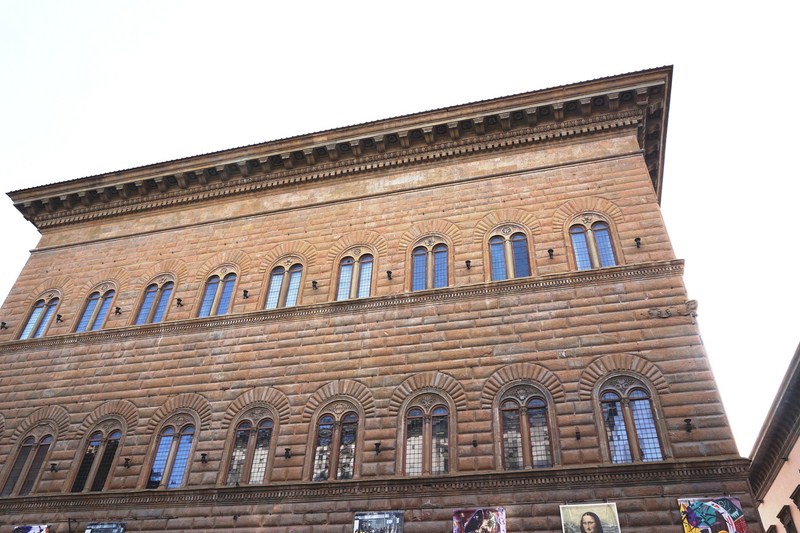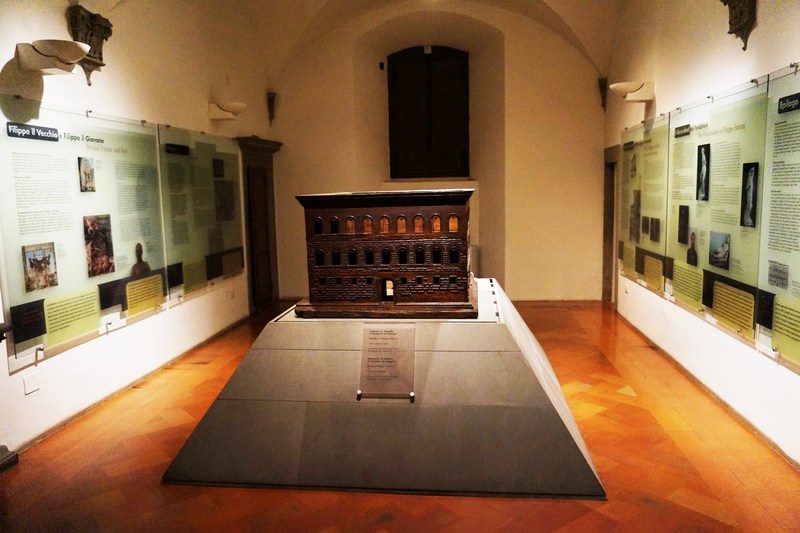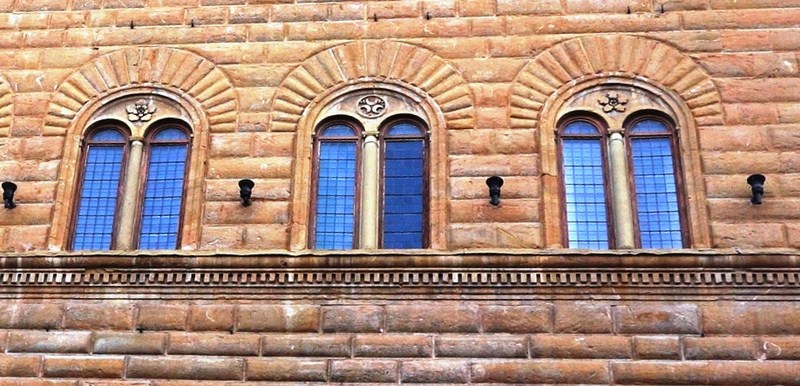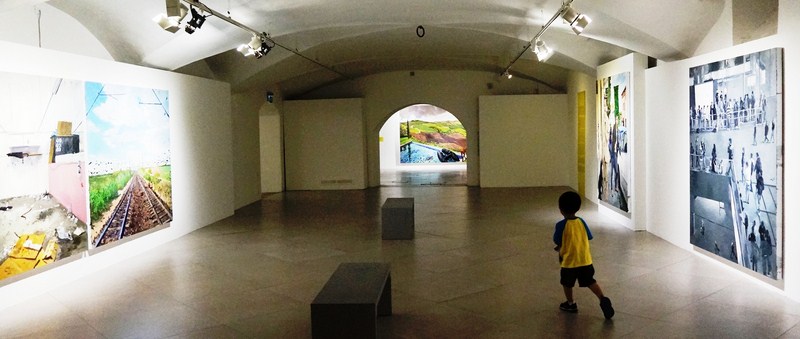Palazzo Strozzi, facing the historical Via de’ Tornabuoni, is one of the finest examples of Renaissance domestic and civil architecture. It has, since World War II, been Florence’s largest temporary exhibition space and, today, the palace is used for the now-annual antique show (founded as the Biennale dell’Antiquariato in 1959), international expositions, fashion shows, and other cultural and artistic events such as “Cézanne in Florence, Two Collectors and the 1910 Exhibition of Impressionism.”
During our visit, there ongoing exhibits were “Migrazioni” (Liu Xiadong, April 22-June 19, 2016) and “From Kandinsky to Pollock: The Art o the Guggenheim Collections” (March 19-July 24, 2016).
Check out “Migrazione Exhibit” and “From Kandinsky to Pollock: The Art o the Guggenheim Collections Exhibit”
Designed by Benedetto da Maiano and begun in 1489 , the palace was built for Florentine banker, statesman and merchant Filippo Strozzi the Elder, a rival of the Medici who had returned to the city in November 1466. He desired the most magnificent palace to assert his affluent family’s continued prominence and, perhaps more important, a political statement of his own status.
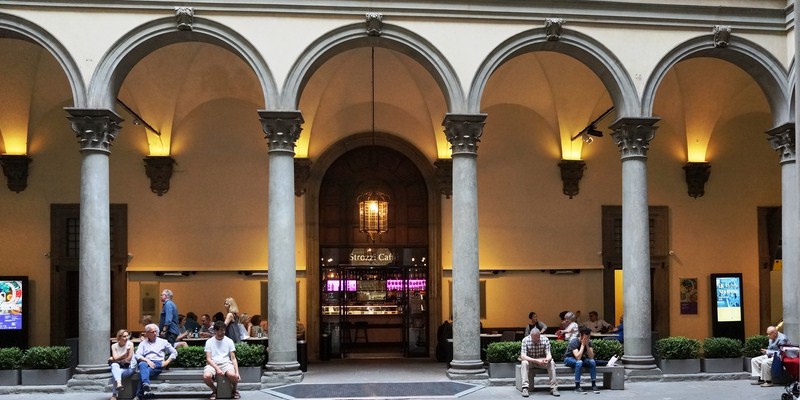
Cortile (Central Courtyard)
To provide enough space for the construction of the largest palace that had ever been seen in Florence, a great number of other buildings were acquired during the 1470s and then demolished. A wood model of the design was provided by Giuliano da Sangallo. Italian architect Simone del Pollaiolo (il Cronaca), in charge of its construction until 1504, left the palace incomplete and the palace was only completed in 1538, long after Filippo Strozzi’s death in 1491. That same year, Duke Cosimo I de’ Medici confiscated it but it was returned to the Strozzi family thirty years later.
 It remained the property and seat of the Strozzi family until 1937, after which time it was occupied by the Istituto Nazionale delle Assicurazioni which made great changes to the building.
It remained the property and seat of the Strozzi family until 1937, after which time it was occupied by the Istituto Nazionale delle Assicurazioni which made great changes to the building.
Since 1999, it has been managed by the City of Florence. The Palazzo is now home to the Institute of Humanist Studies, the Fondazione Palazzo Strozzi (Palazzo Strozzi Foundation), the noted Gabinetto Vieusseux, with its library and reading room, and the Istituto Nazionale del Rinascimento (Renaissance Studies Institute), the last two occupying the building since 1940.
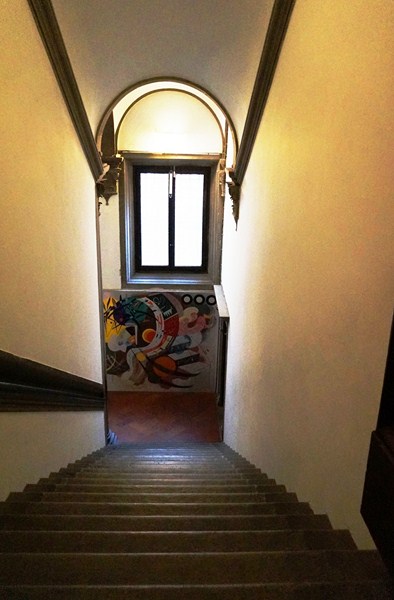 From Palazzo Medici, Filippo copied the cubic form, designing its three floors around a cortile (central courtyard) surrounded by an arcade, inspired by Michelozzo. Its rusticated stone was also inspired by the Palazzo Medici but with more harmonious proportions. However, this free-standing structure is surrounded on all four sides by streets unlike the Medici Palace which is sited on a corner lot and, thus, has only two sides. The ground plan of Palazzo Strozzi, rigorously symmetrical on its two axes, with clearly differentiated scales for its principal rooms, introduced a problem new in Renaissance architecture (given the newly felt desire for internal symmetry of planning symmetry) – how to integrate the cross-axis.
From Palazzo Medici, Filippo copied the cubic form, designing its three floors around a cortile (central courtyard) surrounded by an arcade, inspired by Michelozzo. Its rusticated stone was also inspired by the Palazzo Medici but with more harmonious proportions. However, this free-standing structure is surrounded on all four sides by streets unlike the Medici Palace which is sited on a corner lot and, thus, has only two sides. The ground plan of Palazzo Strozzi, rigorously symmetrical on its two axes, with clearly differentiated scales for its principal rooms, introduced a problem new in Renaissance architecture (given the newly felt desire for internal symmetry of planning symmetry) – how to integrate the cross-axis.
The three sides overlooking the street each have three arched portals. The palazzo, with its dominating cornice (typical of the Florentine palaces of the time), has paired mullioned windows (bifore) and wrought-iron lanterns, done by an iron-worker named Caparra, decorating the corners of the palace exterior. As they rise to the keystone, the radiating voussoirs of the arches increase in length, a detail that was much copied for arched windows set in rustication in the Renaissance revival.
Palazzo Strozzi: Piazza degli Strozzi, 50123 Florence, Italy. Tel: +39 055 264 5155. Open daily, 10 AM – 8 PM (Thursdays, 11 PM). E-mail: info@palazzostrozzi.org. Website: www.palazzostrozzi.org. Admission: €12.00.

